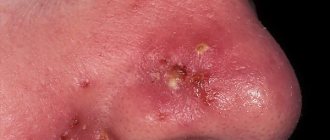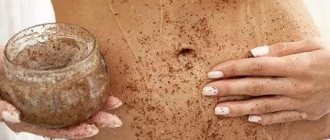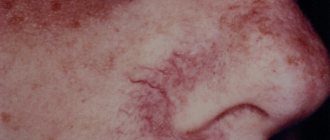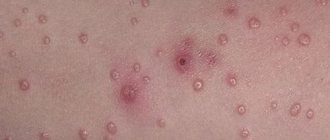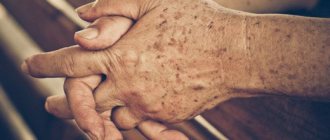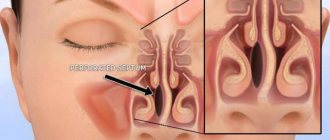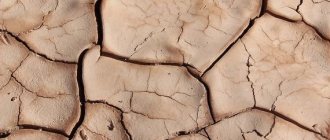White spots on the skin are not an independent disease, but can be a symptom of a dangerous disease.
We will talk about where white spots on the skin come from, how to find the cause of their appearance and how to treat them in this article. See photos of various diseases that manifest themselves as white spots.
How do white spots on the skin appear and where do they come from?
Leucoderma haunts women, men and children, regardless of age
White spots are a disorder of skin pigmentation, a pathological process that results in a decrease or disappearance of the level of melanin (coloring pigment) in the skin.
Doctors call white spots on the skin leukoderma, hypochromia, leukopathy, hypopigmentation or hypomelanosis.
The starting material for the formation of melanin is tyrosine (amino acid).
We either get tyrosine from food, or it is formed by an amino acid such as L-phenylalanine.
It is affected by pineal gland hormones or the enzyme phenylalanine-4 hydroxylase. This process is complex and is controlled by the nervous and endocrine systems.
If there is a malfunction in it, melanin in the cells stops accumulating and pigmentation is disrupted. This phenomenon is called skin dyschromia. White spots are one of the variants of dyschromia.
Leucoderma haunts women, men and children, regardless of age.
Also, white spots on the skin of various types can be a symptom of other infectious and non-infectious diseases. We'll talk about this in more detail below.
What is leucoderma
Leukoderma (syphilis) is the second stage of the sexually transmitted disease syphilis. It occurs in women who have been struggling with the disease for a long time. Considered a nervous disorder. The affected area is the neck, not far from the parietal and temporal areas of the skull. Spots may appear on the shoulders and back.
The first symptoms develop two months after infection with syphilis. The stains may remain for many years. The symptoms are as follows.
1) The pigmentation disorder spreads throughout the body except the feet and palms. Spot color: pink, white, red, yellow. Symptoms of a cold are possible: fever, weakness, feeling hot and cold.
2) Hair loss and loss of most of the hair follicles.
3) Spread of the disease to the control of the vocal cords. Heaviness in the voice.
4) The spots are not subject to inflammatory processes and surface peeling.
| Spotted leucoderma | Lace leucoderma |
| The spots are located over the entire surface of the body. They don't merge. The distance is small. | The skin completely loses its ability to pigment. Small spots of normal skin remain. |
It is possible for spotted leukoderma to flow into lacy leukoderma.
Treatment of the disease involves eliminating the cause of its occurrence - syphilis. Use of antibiotics is used. It is important to remember that treatment is a long process that requires patience.
Character of pigmentation
Based on the nature and characteristics of white spots on the skin, one can draw conclusions about the disease that caused them.
Here are just some descriptions and reasons:
- The color of the spot can be light pink or have a yellowish tint
A white spot with a red rim . A red rim around the spot is a sign of various problems in the body, infectious diseases or allergies. Another white spot with a red rim appears when a wound is healing, a burn, or as a result of serious stress. Spots with a red rim can occur due to ringworm, athlete's foot, trichophytosis, or mycosis contagiosum. The white color often appears due to plaque on the spot.
- Flaky white spots . The color of the spot can be light pink or have a yellowish tint. Often these spots are rough to the touch. The cause of such spots may be pityriasis versicolor, caused by a fungus. Less commonly, such spots are caused by psoriasis.
- Itchy white spots. These have a scaly surface, and in the cold season they can become inflamed. The diameter of the spots is from 1 to 4 cm, appearing on the arms and legs. The culprit is pityriasis alba. Dermatologists believe that pityriasis alba is caused by a fungus called Malassezia, which produces substances that block the passage of UV rays to the skin. Alba may develop in people with asthma, eczema or atopic dermatitis.
- Convex white spots . At the initial stage of development of lichen, all spots on the skin have a convex shape. The second reason is benign or malignant skin formations.
- Spots on the skin with white edges . The color may be pink, brownish or red, and the white edges are jagged. The appearance of spots is accompanied by itching and the desire to scratch the skin. These are also lichens, fungal diseases, streptoderma and dermatitis. Sometimes it's just a healing burn.
- White dry spots on the skin . They usually peel off. Here again, pityriasis versicolor or the more rare hypomelanosis are to blame. If they don't peel, get tested for vitiligo.
- Small white spots . If they are located in the form of a rash and have an uneven surface, mycosis is again to blame. Another cause of such spots is non-pigmented melanoma. This is a skin cancer that can be difficult to detect. Small spots with it have an irregular shape and clear boundaries, the hair located on such spots also turns white.
- White spots when pressed . Skin diseases and fungi are not to blame here. A symptom of a white spot is a phenomenon when a spot on the skin does not disappear for a long time after pressing with a finger. Causes: impaired sympathetic innervation or vascular insufficiency.
White rashes also on legs
It can be difficult to identify why spots appear on your arms and legs.
Below are facts that affect the formation of stains:
- Physical injuries;
- Regular contact of the skin with specific types of synthetic fabrics, personal hygiene products, detergents;
- Liver disorders;
- Malfunction of the pituitary gland;
- Diseases of the stomach and intestines;
- Immune failure, as a result, the body destroys melanocytes, cells that produce melanin;
- Constant stress;
- Imbalance of vitamins and microelements;
- Pregnancy;
- Hereditary predisposition;
- Sunburn.
Causes of white spots
Causes of white spots:
- Any inflammatory skin diseases;
- Endocrine diseases;
- Diseases of the central nervous system;
- Infections (syphilis, leprosy, white, red flat, scaly, multi-colored lichen);
- Consequences of inflammation (for burns or skin ailments accompanied by inflammation (eczema and psoriasis);
- Medicinal and toxic causes;
- Congenital. These are all forms of albinism (there are 10 in total), Bloch-Sulzberg melanoblastosis, tuberous sclerosis. They are often provoked by congenital pigment incontinence, Wolf syndrome, Waardenburg and Ziprovsky-Margolis syndromes;
- Immune causes (scleroderma, halo-nevus, systemic lupus erythematosus, vitiligo - with these ailments the immune system itself can destroy melanocytes).
Preventing this problem
Four tips to help prevent white spots:
- You can protect your skin from burns by gradually increasing your time in the sun. This advice is useful for people whose skin quickly turns red from the sun.
- Using sunscreen while tanning.
- If there are a lot of moles on the body, then it is wiser to reduce the time spent in the sun so as not to provoke the appearance of white spots and the development of cancer.
- Drinking drinks and foods rich in antioxidants will help reduce the harmful effects of ultraviolet rays on the skin, the risk of developing cancer, and slow down the aging process of the skin.
Doctor: Olga Shishkina ✓ Article checked by doctor
Diseases
There are many diseases that can cause white spots to appear on the skin, and not all of them affect only the skin.
Here is a list of the most “popular” ailments:
- Vitiligo. The main symptom of the disease is milky white spots on the skin. They most often appear around the mouth, eyes and ears, on the arms and legs, in the groin area and on the buttocks. Their boundaries are clearly defined, the color may be bluish, and sometimes they have a pigmented outline or border. May be accompanied by dermatitis, baldness, inflammation of the retina, sweating disorders and skin sensitivity in white areas. Among the risk factors, one can note not only the reasons mentioned above, but also poor nutrition of the skin, its injuries and burns (can provoke disruptions in the immune system), liver and gastrointestinal diseases, and taking certain medications. Most patients begin to develop between the ages of 10 and 30 years. The causes of the disease are still being investigated:
- One of the reasons is called autoimmune failures. Thus, antibodies destroy healthy cells, including skin pigments. The connection between vitiligo and impaired immunity is evidenced by the fact that this disease often occurs in those who suffer from rheumatoid arthritis and systemic lupus.
- Another possible cause of vitiligo is problems with genetics.
- They can provoke vitiligo and malfunctions of the thyroid gland (goiter).
- Pityriasis versicolor. Fungal disease. It is caused by the round yeast-like fungus Pityrosporum orbiculare, the oval Pityrosporum ovale and the mycelial Malassezia furfur. All these are forms of one fungus and they can change freely into each other. They live quietly on human skin and do not harm it, and begin active activity only under certain conditions. The reasons for its appearance are insufficient body hygiene, a change in weather to warmer, and simply a person’s predisposition to fungal diseases. Most often occurs in young men and adolescents, and is more common in warm countries. The main symptom of pityriasis versicolor or pityriasis versicolor is white and scaly spots on the body that have an irregular shape. They arise due to the fact that fungi disrupt the functioning of melanocytes.
- Idiopathic guttate hypomelanosis . A benign variant of leukoderma, in which small depigmented spots appear on the body and face. Most often occurs in women over 50 years of age. The word “idiopathic” in the name means that the cause of the disease is unknown. But the fact that most often such hypomelanosis appears in adults indicates that one of its causes is photoaging of the skin. Confirmation of this can be found in statistical data: most sufferers from guttate melanosis are among those with fair skin (light type 1 - 3). Some dermatologists consider the cause of the disease to be histocompatibility antigens HLA-DR 8. Dermatologists do not rule out the hereditary nature of melanosis. The main symptom is small (up to 1 centimeter in diameter) porcelain-colored spots. They do not increase in size and have clear boundaries. The hair on the affected skin does not change color, which is how melanosis differs from vitiligo. The back of the lower leg is affected first, then the forearms, chest and upper back.
- Fungus on the skin. White spots appear due to fungal ringworms and thrush. They are usually accompanied by itching. There are a lot of fungi that live on our body (and inside it). But they can begin active activity in the following cases:
- with excess weight;
- after treatment with antibiotics;
- due to the habit of not drying the skin after bathing;
- for diabetes;
- in contact with animals and people sick with mycosis;
- when using things contaminated with mycoses;
- when wearing too tight clothes and shoes;
- with weakened immunity;
- with insufficient hygiene;
- during pregnancy.
- Pityriasis rosea . Aka Zhiber's disease. It is believed to be an infectious skin disease, but there is little precise information about its origin. The causative agent is unknown, but there is a version that it is a herpes virus. Little more is known about the contagiousness of the disease. Dangerous during pregnancy, as it can cause spontaneous abortion. Usually the disease begins with a couple of maternal plaques, which are distinguished by a bright pink color. After a few more days, light pink, almost white, rashes appear all over the body. In the center of the spots there is peeling, slight itching, a slight increase in temperature and enlarged lymph nodes. If left untreated, pityriasis rosea develops into a more severe form called Lichen annulare Vidal. After the rash resolves, as with any other skin disease, pityriasis rosea may leave white spots.
- Pigmentless nevus . It is also an intradermal mole in which there are not enough pigment cells. It is a skin neoplasm, and a benign one. It does not cause any particular concern, does not grow, and very rarely develops into a malignant neoplasm. Most often it occurs in children.
- Leprosy . Now the phenomenon is extremely rare. Doctors call it chronic granulomatosis. Caused by mycobacteria (Hansen's bacillus or mycobacterium lepromatosis). It affects not only the skin, but also the central nervous system, reproductive system, eyes, and larynx. What do the white spots have to do with it? They are the first symptom of leprosy. They are either too sensitive to stimuli (hyperesthesia) or not sensitive at all (paresthesia). After 2–3 days, this hypopigmentation disappears on its own.
- Syphilis . Here we are talking about syphilitic leukoderma. Treponema pallidum, as a carrier of syphilis, is transmitted not only through sexual contact. The rash with syphilis has its own characteristics. Usually spots appear with secondary recurrent syphilis. They are best seen in side lighting; they can vary in size, but their average diameter is about a centimeter. They are located in the neck, on the arms, on the torso, less often on the stomach, back or lower back. There is no itching, pain or other discomfort from them.
Pigmentless nevus
Idiopathic guttate hypomelanosis
Fungus on the skin
Leprosy
Pityriasis versicolor
Lichen Rosea Vitiligo
Syphilis
Appear on fingers
If white spots appear on your fingers, you should immediately consult a doctor. The faster this is done, the greater the chances of a speedy recovery. They often appear with pityriasis versicolor.
The fungus spreads to the surface of the body and scalp. They produce special enzymes that slow down the process of melanin production.
As a result, the skin first acquires a pink tint, and then becomes white.
To treat this disease, use antifungal medications. If ringworm is ringworm, the disease is accompanied by itching, and a ridge and scales appear on the skin. As a result of the research, it was revealed that the disease differs in its fungal nature.
Often different types of lichen, which are not transmitted, are confused with the disease vitiligo. Drug treatment is effective.
The secondary manifestation of syphilis is characterized by the cosmetic defect leukoderma and the so-called necklace of Venus. The spots may appear on the fingers, armpits and back.
They are approximately one centimeter in diameter, white in color, and do not cause physiological discomfort. If the cause that triggered the appearance is not treated, they can remain on the skin for several years.
You will need to consult a doctor. He often recommends taking a course of antibiotics. Sometimes they appear due to old cuts, abrasions or burns. Pigmentation takes a long time to recover. Sometimes this will take several months.
Other situations
Sometimes white spots are not associated with endogenous diseases or skin diseases, or are rather indirectly associated with them.
Here are a few such cases:
- Sometimes pityriasis versicolor is to blame for the appearance of light spots after sunbathing, or less often - sunscreen
White spots after sunbathing . They can occur in areas of the skin that were once injured (scars, burns, etc.). Sometimes pityriasis versicolor is to blame for the appearance of light spots after sunbathing, and less often, it’s tanning cream (if it’s not distributed correctly). Other causes of white spots after tanning are due to a lack of melanin. Read above about the causes of this problem and contact a dermatologist.
- White spots during pregnancy . There are two reasons for their appearance. White spots on the legs may indicate problems with blood circulation and that the lower extremities need compression. The second reason is the same failure of the entire hormonal system that is typical for pregnancy. It also affects the production of melanin. Such spots will go away on their own after childbirth and they do not pose any danger.
- Light areas of skin after hydrogen peroxide. Peroxide is a good cosmetic product for getting rid of age spots, for cleansing the skin and fighting acne, but when used, an oxidation reaction occurs, which leads to a chemical burn and hypopigmentation. It's not easy to get rid of it. It will be easier to prevent such burns: It is better not to apply peroxide in its pure form (you can only apply it to individual pimples or dark spots).
- Keep it on your skin for no more than ¼ hour.
- Add softening ingredients (vegetable oils, honey, yolks) to masks with peroxide.
- After rinsing, be sure to soften the skin with a nourishing cream.
Why do they occur after sunbathing?
They do not look aesthetically pleasing, and it is not always possible to cover them with foundation. To prevent the manifestation of this symptom, it is important to study the reasons that can trigger its occurrence and possible precautions.
One of the most common causes is a fungal infection. Often representatives of the fair half of society do not even think about the fact that pityriasis versicolor develops in their body.
This is because the disease differs in that many of its symptoms are hidden.
After tanning, you can observe them with your own eyes. Only areas of the skin that are affected by lichen after sunbathing acquire a color that is unusual for the skin. Externally, such skin looks as if faded under the sun's rays.
It is worth recommending not to try to independently identify the cause of such a reaction on the skin. The best thing to do would be to seek help from an experienced dermatologist. Many factors can trigger the development of a fungal infection.
The most common include:
- Stress;
- Taking some medications for a long time;
- Unstable skin acidity levels.
The occurrence of spots and the reasons that provoked their appearance affect a significant decrease in the patient’s immunity.
Where might they appear?
Where the white spots appear depends on the disease that caused the hypomelanosis.
Here are a few special cases:
- White spots on the stomach and back may indicate allergic reactions and skin diseases
white spots on the inside of the legs and arms appear due to lichen and fungal diseases;
- white spots on the legs, noticeable when pressed, are a sign of problems with blood circulation;
- Idiopathic guttate hypomelanosis begins with white spots on the lower leg;
- white spots on the stomach and back may indicate allergic reactions and skin diseases (psoriasis);
- white spots on the neck, called the necklace of Venus, are a symptom of syphilis;
- spots on the face (especially around the mouth) are a signal of the onset of vitiligo;
- white spots on the scalp - indicates focal albinism, which manifests itself in the appearance of white spots;
- white spots on the lips under the skin are signs of candidiasis, stomatitis, colds (caused by the herpes virus). White spots in the form of granules are diagnosed with Fordyce disease;
- small white pimples under the eyes - milia (popularly called millet) appear with increased sebum secretion;
- white spots on the palms appear more often with vegetative-vascular dystonia, vitiligo, leukoderma, partial albinism;
- white spots on the genitals are characteristic of inflammation and infectious diseases, such as candidiasis, papillomavirus, and also appear with decreased immunity, diabetes, and HIV infection.
- a separate white spot on any part of the body can indicate many skin diseases: syphilis, leprosy, mycosis.
Hypovitaminosis
Guttate hypomelanosis manifests itself in the form of small, several millimeters in diameter, white spots on the skin. The spots look like drops - hence the name of the disease.
In early childhood, the disease can become a complication of severe infectious diseases. At the same time, damage to the central and peripheral nervous system and delayed mental and physical development may occur.
See also on the blog: Are red moles on the body dangerous?
The skin in the area of the spots can be either smooth or rough, scaly, there is no itching. The spots usually appear on exposed areas of the body exposed to sunlight.
The disease is more common in people with fair skin.
In adults, guttate hypomelanosis occurs after forty years and is associated with natural aging of the skin.
Diagnostics
Consult a doctor even if changes in the skin do not cause any discomfort or inconvenience.
Treatment is carried out by a dermatologist or dermatovenerologist, other specialists (endocrinologist, gastroenterologist, neurologist, immunologist, rheumatologist) are optional:
- The diagnosis cannot always be made only by external examination of the skin.
To make a diagnosis, a dermatologist will take a look at your medical history, examine your skin, and find out if you have recently taken (and what) medications or been in contact with (and what) chemicals. The diagnosis cannot always be made only by external examination of the skin.
- For a more detailed diagnosis, a blood test is needed , which can identify both an infectious disease and problems with the immune system (with systemic lupus, antinuclear antibodies are detected in the blood).
- Another type of diagnosis is carried out using a Wood lamp , which is used in special darkened rooms. This method allows you to differentiate infectious diseases (lichen, eczema) and non-infectious ones.
- To clarify the data, you can undergo a biopsy and genetic tests.
- , ophthalmologist, geneticist and cardiologist is required to make a diagnosis
Treatment
Often, treatment of white spots begins with treatment of the underlying ailment. If the reason is not very serious, they may go away on their own.
If leucoderma is of toxic origin, it is enough to stop contact with the substance that caused it.
First, complex treatment is always carried out using drugs and local agents.
The choice of such remedies depends solely on the reasons for the lack of melanin. Afterwards, normal skin pigmentation is restored and aesthetic defects are eliminated.
Medicines
They are prescribed depending on the cause of the appearance of white spots on the skin:
- For the treatment of lichen and other fungal diseases, the following tablets are considered the most effective: Lamisil. The active ingredient is terbinafine. It has a broad effect, stops the synthesis of stearins in fungi, which leads to their death. Contraindicated only in case of hypersensitivity to terbinafine. Price from 443 rub.
- Nizoral. It is also available in the form of tablets that effectively fight against mycoses. Stops the growth of the fungus, changes its cell membrane. Contraindicated for liver diseases, lactose intolerance and for young children (under 3 years). Price – from 790 rub.
- Orungal. Effectively fights against different types of lichens and fungi. Inhibits the key enzyme CYP 450 of fungi. Price from 2350 rub.
- Benzylpenicillin is effective against lichen and other skin diseases that cause the appearance of white spots. Contraindicated for epilepsy, hyperkalemia, arrhythmia. Available in the form of sodium or potassium salt. Price from 7 rub.
- Hydrocortisone (price from 150 rubles).
Ampicillin
Benzylpenicillin
L-phenylalanine
Hydrokartision
Lamisil
Nizoral
Oxacillin
Orungal
Prednisolone
Tyrosine
Each case of leukoderma is individual, so you may be prescribed the most unexpected medications.
What is vitiligo?
But the most common disease that is accompanied by white pigment spots on the body is vitiligo. This is the most mysterious pathology, since the true causes of its occurrence are not reliably known.
Causes of pathology
Until recently, it was believed that it was caused by a viral or bacterial infection. Pathogenic microorganisms, penetrating inside the human body, secrete special substances that destroy the melanin pigment.
But modern medicine, after numerous studies, has come to the conclusion that vitiligo is an autoimmune condition, as a result of which the body perceives its cells as foreign and contributes to their destruction. Why is this happening? The following causes of the disease are identified:
Hormonal disorders. They often occur:
- during pregnancy;
- during menopause in women over 50 years of age;
- due to long-term use of hormonal drugs (for example, oral contraceptives);
- in adolescents during puberty.
after abortion;
Also, some endocrine diseases (pathologies of the thyroid gland, adrenal glands, pituitary gland, gonads) can lead to hormonal dysfunctions.
Poisoning with chemicals and certain medications.
Any of these factors can trigger the disease and lead to the appearance of discolored areas on the body. They are quite difficult to treat.
Symptoms
How to recognize spots that appear as a result of vitiligo? They have a number of features:
- Localization. Most often they appear on the hands, face and knees. They are capable of growing and merging with neighboring spots. They can cover large areas of the body, alternating with healthy skin (the so-called variegated skin color appears). Such spots do not appear on the mucous membranes (like syphilitic ones), the soles of the feet and the palms of the hands.
Color and appearance. They are white or pink in color, do not protrude beyond the surface of the skin, do not peel or itch. There is a tendency to increase in size (from a few millimeters they grow to significant sizes). Increased pigmentation is observed along the edges of the spots. Sometimes small spots appear inside large spots.- Hair depigmentation. If the spots have formed on the hairy areas of the body, the hairs will also become discolored.
- Sensitivity of affected skin areas to ultraviolet, mechanical, and chemical influences.
- Impaired sweating in affected areas.
- Vitiligo often develops against the background of other diseases (porphyria, white skin atrophy, scleroderma).
This pathology occurs in all inhabitants of the planet, regardless of race and gender. Most often, this skin disease occurs at an early age (before 20 years) and remains until the end of life.
PUVA therapy, UVB sessions
Both PUVA therapy and ultraviolet irradiation are light therapy methods.
They have proven themselves best in the treatment of the following skin ailments:
- vitiligo;
- psoriasis and parapsoriasis;
- dermatitis (atopic and seborrheic);
- lichen;
- lymphomas;
- many other rare skin conditions that can cause white spots.
PUVA therapy , also known as PUVA therapy, is a method in which diseased skin is irradiated using long-wave ultraviolet radiation.
This is combined with a photoactive substance (psoralens from the class of furocoumarins):
- You will notice signs of skin improvement after just 4 treatments.
First, you apply or ingest a psoralen product (take the drug with milk or bread).
- Then you go into the cabin and stay under the UV rays for several minutes.
- Another option is to take a psoralen bath a couple of hours after irradiation.
You will notice signs of skin improvement after 4 procedures, and remission after the course lasts from 18 months to 3-4 years. The course includes 20 sessions.
It also has a positive effect on the immune system. You can have from 2 to 4 sessions per week, and have a new consultation with a dermatologist every 14 days.
Contraindications:
- Hypersensitivity to psoralen;
- Diseases in which sensitivity to light develops (lupus erythematosus, porphyria);
- Melanoma;
- Pregnancy;
- Heart diseases.
UFO (ultraviolet irradiation) is another method of physiotherapeutic treatment. Its work is based on the fact that certain atoms and molecules selectively absorb light energy.
The molecules in the tissues are then in an excited state. This is how photochemical processes are launched in RNA, protein and DNA molecules.
Indications:
- For therapy to be successful, before starting it, the doctor will determine your biological dose of UV rays.
vitiligo;
- pyoderma;
- seborrhea;
- psoriasis.
For therapy to be successful, before starting it, the doctor will determine your biological dose of UV rays. The course lasts from 10 to 20 irradiations. They are held once every 2 days.
Contraindications:
- predisposition to bleeding;
- neoplasms (malignant only);
- tuberculosis (in the active stage);
- thyrotoxicosis;
- hypertension;
- exacerbation of intestinal and stomach ulcers;
- blood diseases (systemic);
- atherosclerosis (coronary vessels and arteries of the brain);
Procedures are carried out with caution for acute diseases of the skin, nasopharynx and inner ear, for skin tuberculosis and for wounds caused by anaerobic bacteria.
Effective treatment methods
To make your hands beautiful again, it is important to consult a doctor in time. He will be able to determine the true cause of white spots on the hands and carry out treatment.
The most well-known method for eliminating this symptom is PUVA therapy. Its essence is that the white areas of the skin are lubricated with compounds, and then influenced by ultraviolet light.
As a result of this procedure, melanin begins to be actively produced. The spots will be the same color as the rest of the skin.
This method is not suitable for everyone. It has a number of contraindications. The procedure has changed slightly.
Now they do not use ultraviolet rays directly. They are added to the composition that is used to lubricate the skin. The whole procedure as a whole has become more harmless to people's health.
Often the cause is a disturbance in the emotional background. The doctor prescribes baths, they help put the nerves in order and eliminate the symptom.
They should be taken twice a week. To do this, add 25 milliliters of alcoholic valerian and 3 tablespoons of pine needle extract to the water. You should lie in such a bath for at least 15 minutes.
It is effective to take such baths simultaneously with the use of PUVA therapy. The results can be seen in the near future.
One of the causes of white spots on the hands is a lack of T-lymphocytes.
Then patients are advised to take a course of Echinacea tincture. In addition, it is useful to take a course of vitamins C and B6.
Physiotherapy
Kinds:
- Do the procedure daily or every 2 days
The simplest physiotherapeutic method is heliotherapy . It's just a tan under the southern (or just summer) sun. Regular tanning under the sun also activates melanin synthesis. It is important to complete a whole course of sunbathing, that is, from 12 to 24 trips to the sea or to the river. Contraindicated in patients with cancer.
- Electrophoresis of copper . It mitigates side effects after PUVA and UVB. Complete the procedure daily or once every 2 days. The duration of electrophoresis is ¼ hour.
- Darsonvalization . The skin is exposed to pulsed current (frequency and voltage are high, strength is low). It is actively used in the treatment of vitiligo, psoriasis, eczema, dermatitis and many other skin ailments. Contraindicated in cases of cancer, skin tumors of any nature, epilepsy.
Skin graft
This method is recommended for vitiligo, when areas of hypomelanosis become too large and cannot be corrected.
Skin grafting can be:
- To carry out the transplant, the skin is cut off using a dermatome, the flap is immediately transplanted to the desired area and sutured
autotissue, when the patient’s healthy skin is used (for vitiligo - not the best option);
- allotissue – the skin of immediate relatives is used;
- cellular is a good option for vitiligo. It uses individual cells created in the laboratory.
To carry out the transplant, the skin is cut off using a dermatome, the flap is immediately transplanted to the desired area and sutured.
Another operation, melanocyte transplantation, is also gaining popularity.
It is carried out if the disease is stabilized and the spots have not grown for the last six months.
For transplantation, healthy melanocytes are taken from the skin on the buttocks (or other areas of the skin not affected by vitiligo), converted into a cell suspension and injected into the depigmented area, previously treated with dermabrasion or laser.
A special bandage is placed on top. Repigmentation occurs after 2–4 months.
There are several requirements for melanocyte or skin transplantation:
- you should not be anemic;
- the level of total protein should be below 60 g/l;
- protein coefficient level is greater than 1.
Ointments, shampoos, soaps, creams
This is not the most effective way to deal with white spots, because the problem is hidden much deeper than on the surface of the skin. But they can also help.
It is best to use ointments when dealing with spots caused by lichen or mycosis. If you are prescribed Nizoral, Orungal or Lamisil tablets, it is recommended to enhance their effect with similar ointments. The same goes for antibiotics.
Here are a few names of ointments that dermatologists prescribe for leukoderma of various origins:
- Methylpred (price from 350 rubles), alklometasone (price from 320 rubles). These are glucocorticoids in ointments. Can be used for vitiligo.
- Melagenin. A popular drug for the treatment of vitiligo. Available as a lotion. The basis of the product is human placenta extract. When using the product, the repigmentation process is accelerated, the skin absorbs ultraviolet rays and the formation of melanin is stimulated. A positive effect is also observed in cases with loss of pigmentation after psoriasis or burns and wounds. It is also effective for eczema and psoriasis. Price from 4400 rub.
- Betamethasone. A glucocorticoid agent that will be effective for both vitiligo and fungi. Price from 176 rub.
- Clotriamzole. Ointment with a wide spectrum of action. It will help get rid of causes of white spots such as lichen and fungal diseases; it is also effective for eczema and psoriasis. Price – 97 rub.
- Irunin. An antifungal agent with the active substance itracanazole. Inhibits the membranes of many fungi. Price from 352 rub.
Afloderm
Betamethasone
Irunin
Clotrimazole
Melagenin
Metipred
Folk remedies
Also not the most effective method of dealing with white spots on the skin. But in combination with other measures they will be beneficial. Just remember that herbs and seeds are also medicines and you need to treat them like you would take regular pills.
Thus, traditional medicine offers its vision of the treatment of vitiligo:
- Rub the stains with sulsen anti-dandruff paste . It's better to take 2%. Sulsen soap works even better. The spots disappear in a few days.
- Mix black pepper in equal proportions with soda and rub regularly into the whitened areas of the skin.
- Whitened areas can also be lubricated with birch tar . We carry out this procedure twice a day for exactly a month.
- the marsh duckweed (5 g), place it in a dark vessel and fill it with 50 ml. vodka. Leave for 7 days in the dark and at room temperature, filter through gauze and drink 20 drops three times a day, pouring ¼ glass of water.
- In equal proportions, mix the pericarp of the walnut with its leaves . Pour in 10 parts of vodka. Leave for 1/3 month and smear areas with no pigmentation maximum twice a day. Treatment lasts a couple of months. Use a protective cream after the tincture.
There are also recipes in folk medicine that allow you to get rid of lichen and infections:
- Away from roads and industrial areas. zones we collect celandine (stems, flowers, leaves). Grind and mix a glass of raw materials with a glass of sugar. Place on gauze and wrap. Now heat the yogurt so that you get cottage cheese and place it in a large jar. We also place the celandine in gauze here. We wait a month, every day we remove the film and make sure that the bag does not float up (it’s better to press it down). Strain and drink 20 ml three times a day.
- Sunflower petals (freshly picked) are steamed in boiling water and applied to places where there is lichen. We use it daily.
- Wipe yourself with apple cider vinegar . It's better if you do it yourself too. To prepare, chop apples (one bucket) and pour in the same amount of boiling water, and add 20 g of sugar on top. When it has fermented (this will happen in 14 days), strain and let it brew for another 14 days.
- a couple of tablespoons of calendula flowers , place in a small glass jar and pour half a glass of vodka. Cover tightly and wait a week. Use for lubrication once a day. A tincture from a pharmacy is also suitable.
Proper nutrition
White spots often appear due to problems with metabolism and the gastrointestinal tract. This can be corrected by changing your diet.
You can also stimulate the production of melatonin with proper nutrition. When treating white spots of any etiology, do not forget about the role of nutrition in their therapy.
With vitiligo, the body needs tyrosine.
You can find it in the following products:
- Traditional medicine for white spots recommends adding onion juice and garlic to all your dishes
sea fish;
- milk and everything that is made from it;
- seafood;
- meat and liver;
- all legumes;
- vegetable oils;
- eggs;
- buckwheat, millet and oats;
- carrots, tomatoes, cauliflower, radishes, pumpkin, spinach, beets, avocado, parsley;
- banana;
- grapes, blueberries, raisins;
- pumpkin, sesame, flax, sunflower seeds;
- pistachios, hazelnuts and almonds.
Traditional medicine for white spots recommends adding onion juice and garlic to all your dishes as a means to fight fungi and helminthic infestations and to strengthen the immune system.
Be sure to take vitamin and mineral complexes as an addition to a proper diet.
Do not abuse coffee, sweets and alcohol.
Eliminate from your diet everything that could even theoretically cause an allergy. Observe how your skin behaves without provocateurs.
Diet to Remove Skin Spots
In order to prevent the reappearance of white spots on the skin in the future, and also to speed up the healing process from this disease, it is necessary to change your diet by eliminating hot spices from the diet : raw onions, ginger, garlic and pepper.
To stimulate the synthesis of the required amount of melanin, care should be taken to ensure that the skin is provided with the following microelements:
- copper;
- zinc;
- iron.
For this purpose, you can take a pharmacy vitamin complex , but you need to keep in mind that these microelements have an antagonistic effect, therefore, if any of these microelements is supplied in excess, this will lead to a deficiency of others. For this reason, it is advisable that artificial vitamin supplements be taken into the body separately. The optimal treatment option is a course, which should include certain intervals.
Products containing copper
A lack of copper in the body leads to rapid fatigue, disruption of the production of the thyroid hormone thyroxine, increased incidence of malfunction of the hematopoietic mechanism, the occurrence of diabetes mellitus, and weakening of bone and connective tissue. If the skin is provided with this microelement in sufficient quantities, it will help the body fight inflammation, and, in addition, will slow down the aging process . The intake of copper increases the absorption of iron, gives hair and skin a more aesthetic appearance, allows you to get rid of white spots on the skin, and make the body more mobile and flexible.
The foods richest in copper content are cucumbers, pork liver, cocoa, cheese, and rose hips.
Products containing zinc
The benefit of zinc is its positive effect on the functioning of body cells. If there is a deficiency of it, this leads to poor appetite , weight loss, and hyperactivity. The negative consequences of zinc deficiency are dermatitis and hair loss. In addition, a person becomes more susceptible to colds and infectious diseases, as well as the risk of developing diabetes. In this condition, the wound healing process occurs much more slowly, and more time is required for rehabilitation.
The highest level of zinc concentration is found in the following foods: oysters, mushrooms, blueberries, brewer's yeast, nuts, pumpkin seeds.
Products containing iron
By providing the body with this microelement in the required quantities, it is possible to create favorable conditions for normal cellular respiration , which occurs largely due to the activity of red blood cells, erythrocytes, the main function of which is to deliver oxygen and remove carbon dioxide with the help of hemoglobin. In addition to this, lymphocytes, the blood cells of the immune system, need iron.
If a person does not receive enough iron, this creates favorable conditions for the occurrence of anemia. Typically, this symptom accompanies many diseases and is characterized by a decrease in the level of hemoglobin in the blood. If the adult body is provided with an insufficient amount of iron, the person will begin to get tired quickly. Children will begin to grow slower and lag behind their peers in terms of mental development.
Iron deficiency negatively affects the skin, as well as the mucous membranes of the mouth, respiratory tract, and gastrointestinal tract. , eczema, dermatitis and other skin diseases form .
Hemoglobin contains a special component - heme iron, the need for which can be met by eating meat, primarily kidneys and liver. Non-heme iron is also isolated, the main supplier of which is plant foods. The richest foods in this substance are beans, buckwheat, legumes, and greens.
For normal absorption, this microelement must only be divalent. In order for the body to be able to process ferric iron, the body must be provided with vitamin C. Due to the presence of a sufficient amount of vitamin C in greens, the process of absorption of iron occurs without any special difficulties. However, the same cannot be said about legumes, so it is recommended to combine them with vegetables that contain large amounts of vitamin C.
The highest iron content is found in the following products: peas, oatmeal, eggs, rose hips, cocoa, pork and beef liver.
Take action!
If you find white spots on your skin, you don’t need to wait for them to disappear on their own:
- Go to a dermatologist or dermatovenerologist and immediately begin examining your skin, body and blood. Sometimes such spots are only the first sign of an impending serious illness, and if you take care of it in a timely manner, then there is a chance that you will defeat it and be left with clear skin and a healthy body.
- Start getting rid of the problem by treating the ailment that caused it, otherwise you will not get rid of the stains.
- Be prepared for the fact that in some diseases, white spots are unlikely to be completely eliminated. And if this aesthetic flaw worries you so much, complete a makeup course and learn how to disguise your problem. A tattoo or self-tanning will also help with this.
White spots on the skin are called by different names, and they have many causes. And while some of them pass quickly, others are completely impossible to get rid of. But this does not mean that you do not need to fight for your health and clear, beautiful skin.



